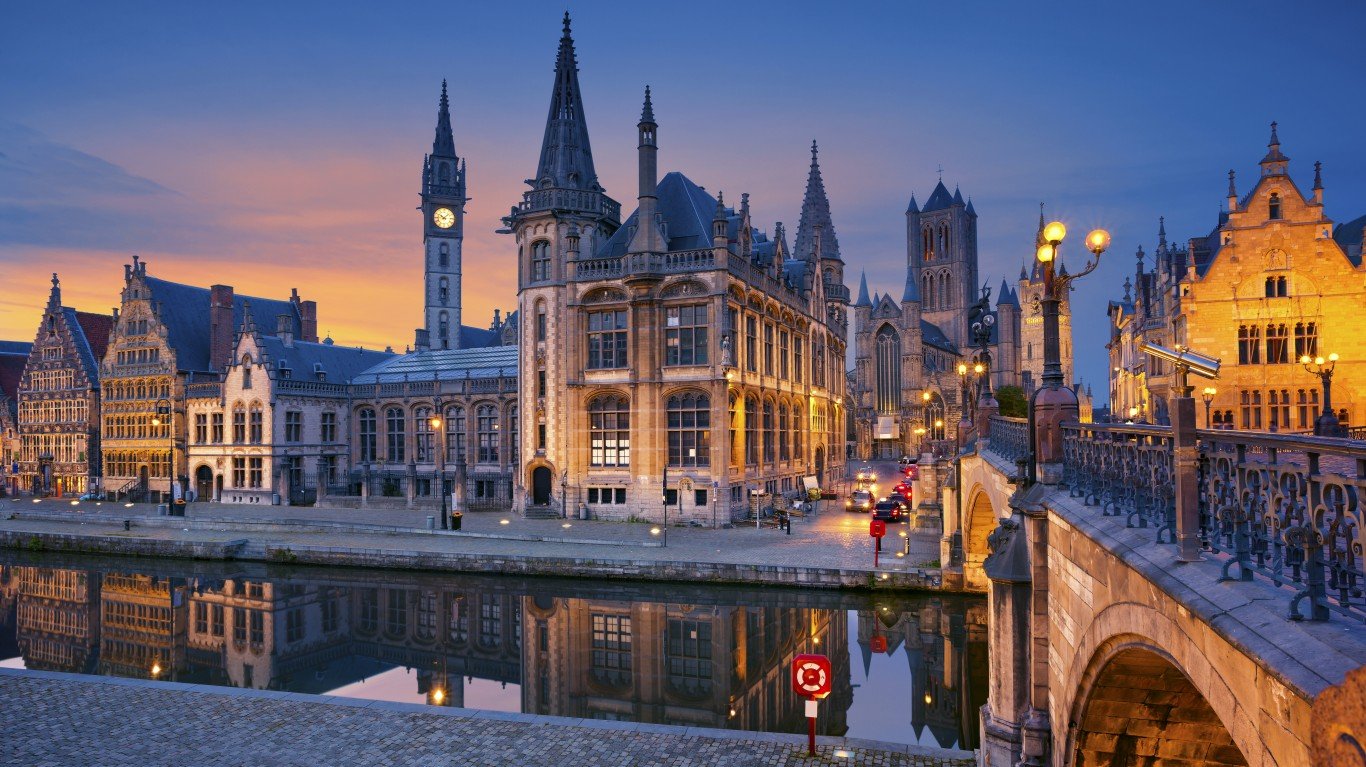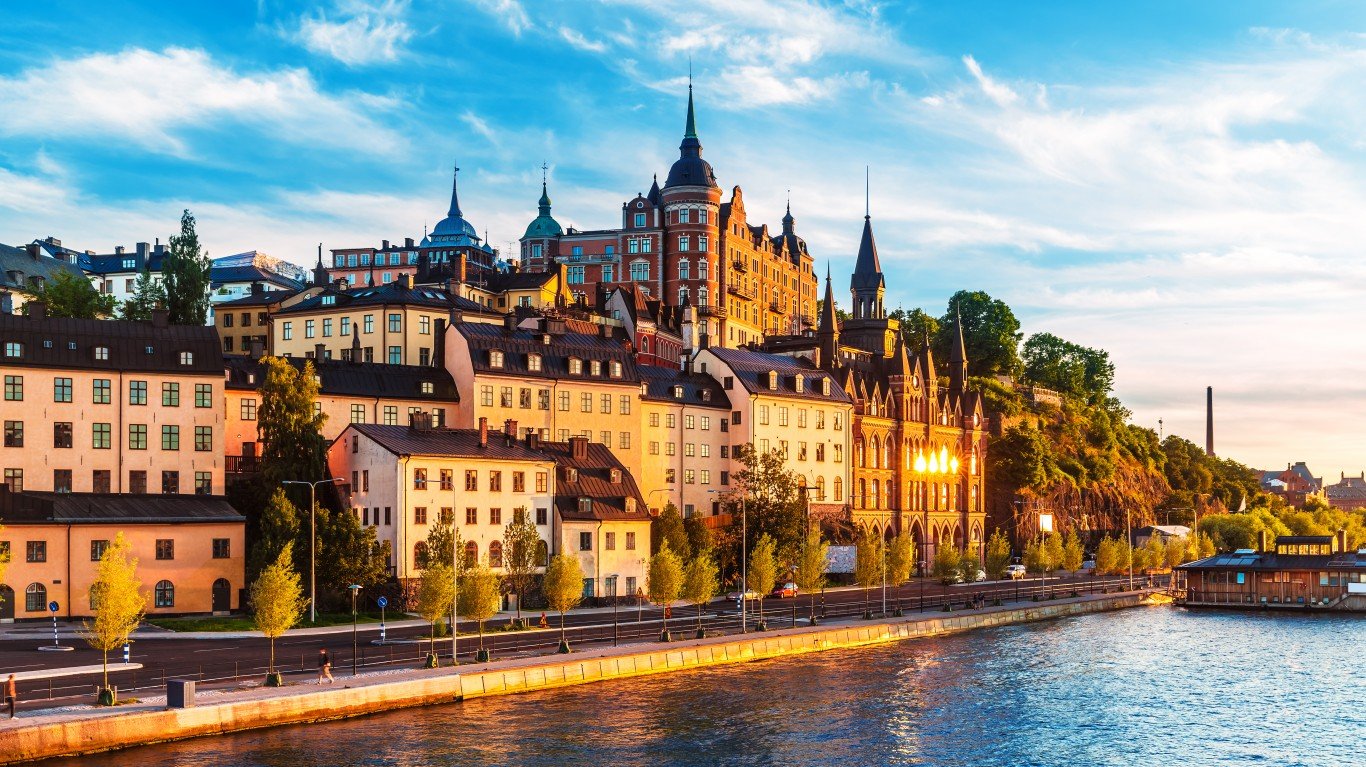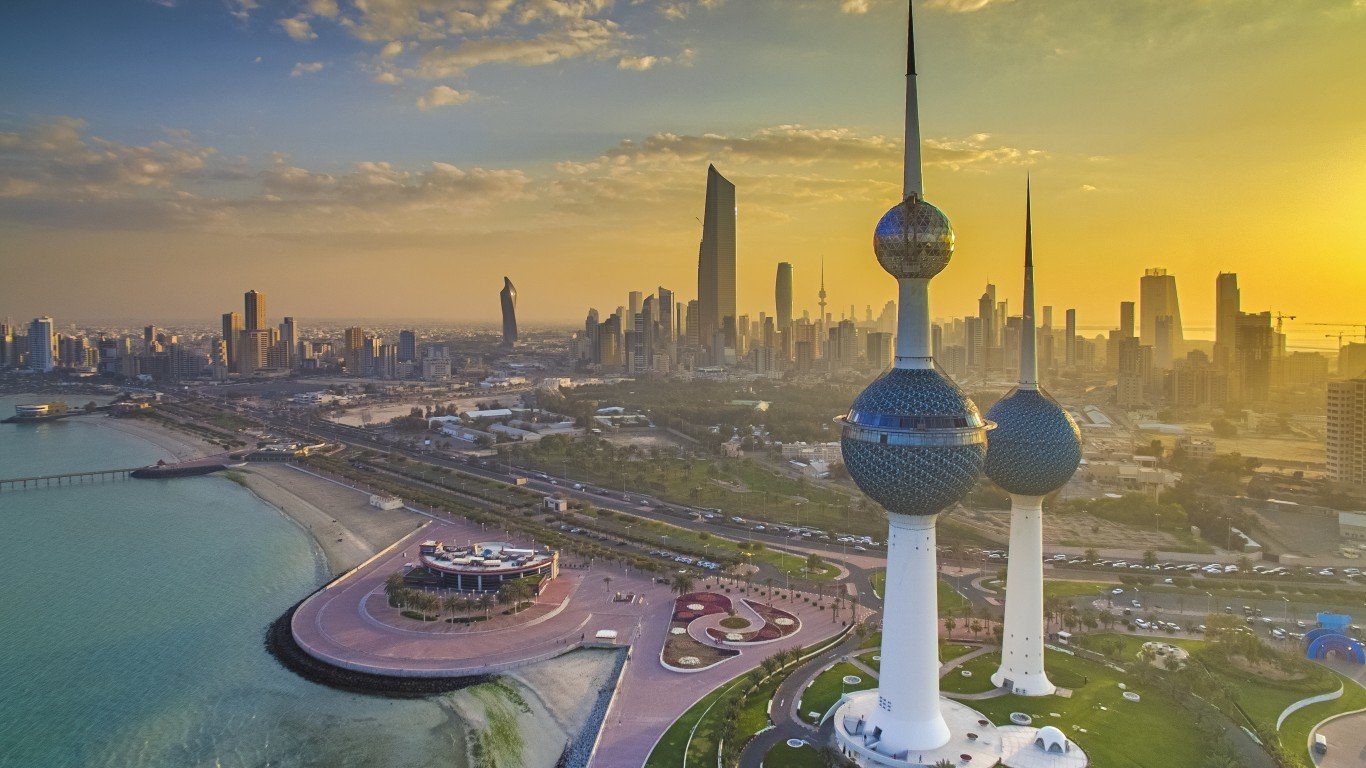
20. Belgium
> GNI per capita: $55,370
> 2020 GDP: $600.5 billion
> Population: 11.6 million
> Avg. life expectancy at birth: 81.7 years
Belgium has the 20th highest GNI per capita out of nearly 200 countries for which there is data, at $55,370. Like many other wealthy countries, the vast majority of Belgians live in urban areas, with access to a variety of jobs. Less than 2% of Belgians live in rural areas, and the country has an unemployment rate of 6.0%. Worldwide, the unemployment rate is 6.5%.
GNI per capita is a good indicator of standard of living in a country and tends to be associated with health care outcomes. Belgium has a life expectancy at birth of 81.7 years, nine full years longer than the worldwide life expectancy at birth of 72.7 years.

19. Sweden
> GNI per capita: $56,270
> 2020 GDP: $564.9 billion
> Population: 10.4 million
> Avg. life expectancy at birth: 83.0 years
Sweden has the world’s 19th highest GNI per capita, at $56,270. Like many other wealthy countries, Sweden’s economy is one of the most diverse. The country produces a wide variety of goods, including cars, technology, medicine, metals, petroleum, and more.
Though Sweden has one of the largest and most productive economies in the world, it is not without its struggles. It has an unemployment rate of 8.5%, 2 full percentage points higher than the worldwide unemployment rate, per the World Bank, and one of the highest among the world’s richest countries.

18. Cayman Islands
> GNI per capita: $58,100
> 2019 GDP: $5.0 billion
> Population: 65,720
> Avg. life expectancy at birth: N/A
The Cayman Islands is a small country just south of Cuba with a population of less than 66,000 people. Its economy is also relatively small, with a GDP of just under $5 billion as of 2019. Yet it ranks as one of the richest countries in the world with a GNI per capita of over $58,000.
Cayman Islands has among the highest GNI per capitas in the world because the country is a tax haven, imposing no income taxes on individuals, corporations, and it has no capital gains or property taxes either. The financial services industry makes up around half of the nation’s economy and a large share of government revenue.

17. Kuwait
> GNI per capita: $58,930
> 2019 GDP: $218.6 billion
> Population: 4.3 million
> Avg. life expectancy at birth: 75.5 years
Kuwait is one of the world’s richest countries with a GNI per capita of nearly $59,000. Much of the country’s economic activity comes from its oil and natural gas sector. Oil rents — the value of crude oil production minus the cost to produce it — accounts for over 42% of the country’s GDP.
All of the world’s richest countries tend to have relatively little corruption, according to Transparency International. Though Kuwait’s score of 42 out of 100 in TI’s 2020 Corruption Perceptions Index is low among the world’s richest countries, it is still higher than most nations. Corruption has been shown to hamper economic activity and growth by disincentivizing innovation and causing economic systems to work less efficiently.

16. Austria
> GNI per capita: $58,940
> 2020 GDP: $491.3 billion
> Population: 8.9 million
> Avg. life expectancy at birth: 81.8 years
The value produced by Austria’s economy, as well as by Austrian companies and individuals in other countries, was $523.4 billion in 2020, or $58,940 per person. Higher incomes often lead to improved health outcomes, and Austria’s life expectancy at birth is over nine years higher than the worldwide expectancy, at 72.7 years.
A total of 41.3% of Austria’s population lives in rural areas — a higher share than any of the other wealthiest countries. Though this is high among wealthy countries, it is lower than the 43.8% share of people living in rural areas worldwide.





